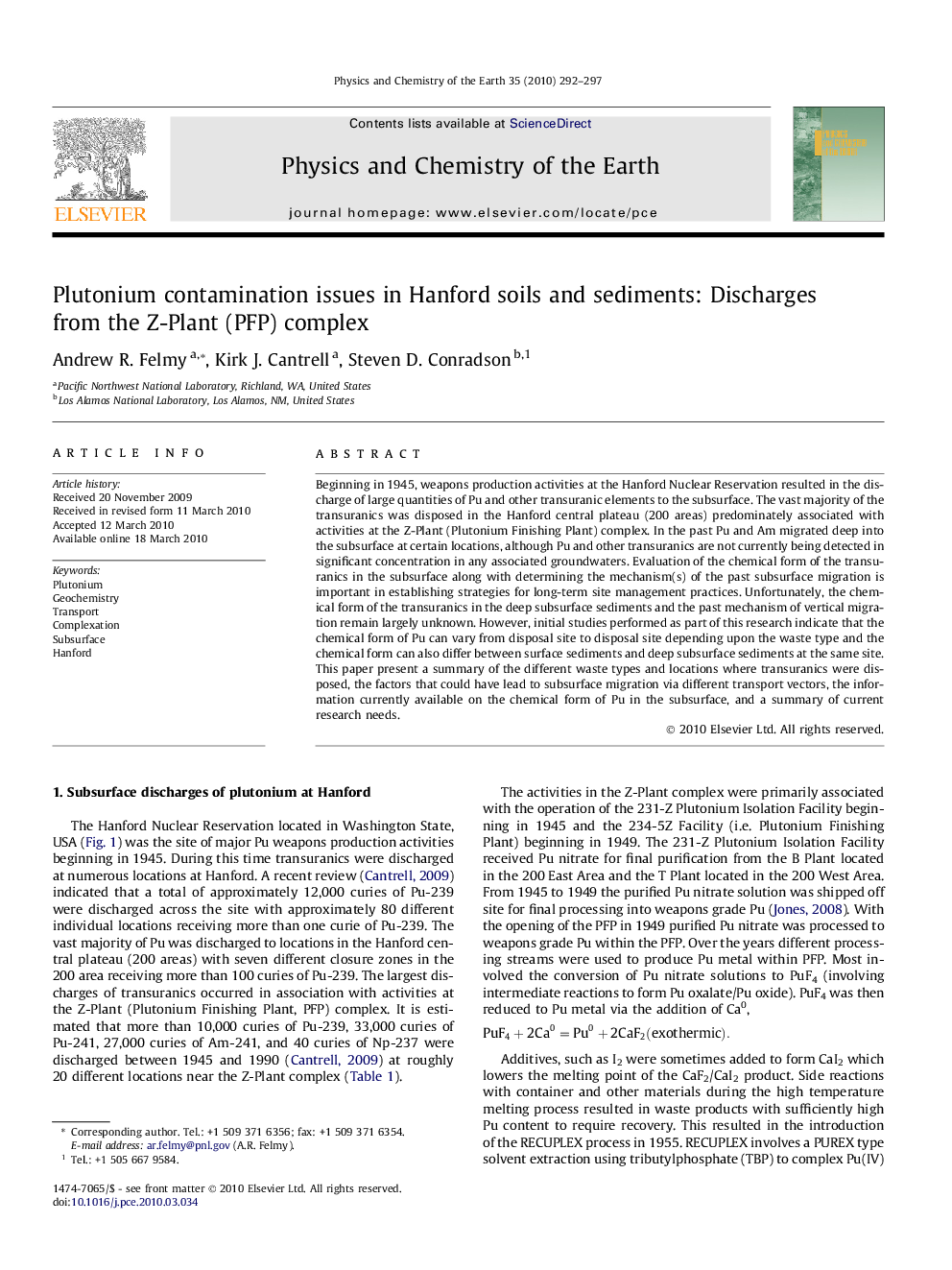| Article ID | Journal | Published Year | Pages | File Type |
|---|---|---|---|---|
| 4722056 | Physics and Chemistry of the Earth, Parts A/B/C | 2010 | 6 Pages |
Beginning in 1945, weapons production activities at the Hanford Nuclear Reservation resulted in the discharge of large quantities of Pu and other transuranic elements to the subsurface. The vast majority of the transuranics was disposed in the Hanford central plateau (200 areas) predominately associated with activities at the Z-Plant (Plutonium Finishing Plant) complex. In the past Pu and Am migrated deep into the subsurface at certain locations, although Pu and other transuranics are not currently being detected in significant concentration in any associated groundwaters. Evaluation of the chemical form of the transuranics in the subsurface along with determining the mechanism(s) of the past subsurface migration is important in establishing strategies for long-term site management practices. Unfortunately, the chemical form of the transuranics in the deep subsurface sediments and the past mechanism of vertical migration remain largely unknown. However, initial studies performed as part of this research indicate that the chemical form of Pu can vary from disposal site to disposal site depending upon the waste type and the chemical form can also differ between surface sediments and deep subsurface sediments at the same site. This paper present a summary of the different waste types and locations where transuranics were disposed, the factors that could have lead to subsurface migration via different transport vectors, the information currently available on the chemical form of Pu in the subsurface, and a summary of current research needs.
